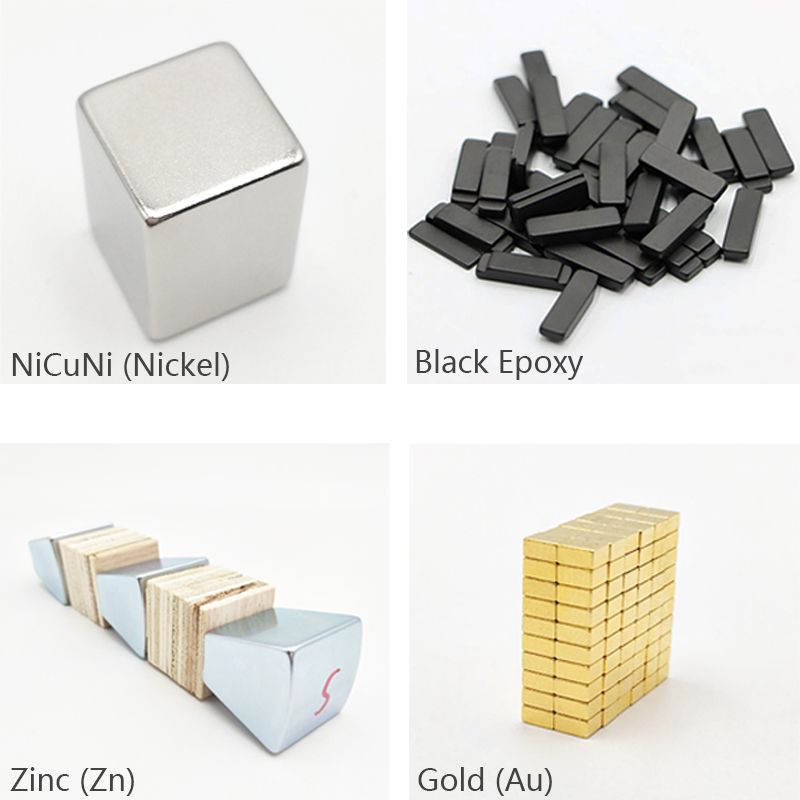Neodyymimagneetit vahvistettu suojapinnoitteella
Neodyymimagneetit ovat merkittäviä poikkeuksellisen lujuutensa ja laajan käyttöalueensa vuoksi. Nämä magneetit on valmistettu neodyymin, raudan ja boorin yhdistelmästä, ja ne tunnetaan vahvimpina nykyään saatavilla olevina kestomagneetteina. Nämä magneetit vaativat kuitenkin suojapinnoitteen tai pinnoituksen varmistaakseen niiden pitkän käyttöiän ja optimaalisen suorituskyvyn erilaisissa ympäristöissä.
Pinnoitus on olennainen prosessi neodyymimagneettien tuotantoprosessissa. Tämä suojakerros suojaa magneettia korroosiolta, iskuilta ja muilta vaurioilta, jotka voivat ennenaikaisesti vähentää sen magnetismia. Ilman asianmukaista pinnoitetta neodyymimagneetit ovat herkempiä hapettumiselle, ruosteelle ja fyysiselle kulumiselle.
Yksi yleisimmistä neodyymimagneettien pinnoitteista onnikkelipinnoitus. Prosessi sisältää ohuen nikkelikerroksen galvanoinnin magneetin pinnalle, mikä tarjoaa hyvän suojan korroosiota vastaan. Nikkelipinnoitus ei ole vain kaunis, vaan se lisää myös ylimääräisen suojakerroksen ympäristötekijöitä, kuten kosteutta ja kosteutta vastaan.
Toinen laajalti käytetty pinnoite on epoksi.Epoksipinnoite on suosittu valinta, koska sillä on erinomainen tarttuvuus ja se kestää useimpia kemikaaleja. Tämä polymeeripinnoite toimii suojakerroksena ja suojaa magneetteja kosteudelta, iskuilta ja kulumiselta. Epoksi eristää myös sähkönjohtavuudesta, joten se sopii sovelluksiin, jotka vaativat sähköeristystä.
Joissakin erikoissovelluksissa neodyymimagneetit saattavat vaatia lisäpinnoitusvaihtoehtoja. Esimerkiksi,galvanointi (sinkkipinnoite) on suositeltava meriympäristöissä korkean korroosionkestävyyden vuoksi. Lisäksi kulta- tai hopeapinnoitusta voidaan käyttää koriste- tai esteettisiin tarkoituksiin.
Päällystysprosessissa on useita vaiheita tehokkaan peittävyyden ja tarttuvuuden varmistamiseksi. Ensin neodyymimagneetti puhdistetaan perusteellisesti ja poistetaan rasvasta mahdollisten epäpuhtauksien poistamiseksi, jotka voivat estää pinnoitetta kiinnittymästä. Seuraavaksi magneetti kastetaan tai ruiskutetaan valittuun pinnoitemateriaaliin. Ne kovetetaan sitten lämpötilassa, joka saa pinnoitteen kovettua ja kiinnittämään tiukasti magneetin pintaan.
Sen lisäksi, että pinnoite parantaa magneetin kestävyyttä, se auttaa myös estämään magneetin halkeilua tai halkeilua käytön aikana. Ohut suojakerros vähentää törmäyksen tai virheellisen käsittelyn aiheuttamien vaurioiden riskiä. Lisäksi pinnoite helpottaa magneetin käsittelyä, koska se tekee pinnasta tasaisemman ja eliminoi halkeamis- tai kuoriutumisvaaran.
Kun valitset pinnoitetta neodyymimagneeteille, on tärkeää ottaa huomioon erityiset ympäristö- ja käyttövaatimukset. Sellaiset tekijät kuin lämpötila, kosteus, kemikaalialtistus ja esteettiset mieltymykset on otettava huomioon. Lisäksi on varmistettava, että valittu pinnoite ei vaaranna neodyymimagneetin magneettikentän voimakkuutta tai muita haluttuja ominaisuuksia.
Yhteenvetona voidaan todeta, että neodyymimagneettien pinnoitteella on tärkeä rooli niiden suorituskyvyn ja pitkäikäisyyden parantamisessa. Maalaamalla suojapinnoite, kuten nikkelipinnoitus tai epoksi, nämä magneetit voidaan suojata korroosiolta, iskuilta ja muilta vaurioilta. Pinnoite ei ainoastaan paranna magneetin kestävyyttä, vaan auttaa myös parantamaan sen estetiikkaa ja sopivuutta monenlaisiin sovelluksiin. Koska neodyymimagneettien kysyntä kasvaa jatkuvasti, luotettavien ja innovatiivisten pinnoitustekniikoiden kehittäminen on edelleen kriittistä niiden optimaalisen toiminnan kannalta eri teollisuudenaloilla.
Postitusaika: 27.10.2023

